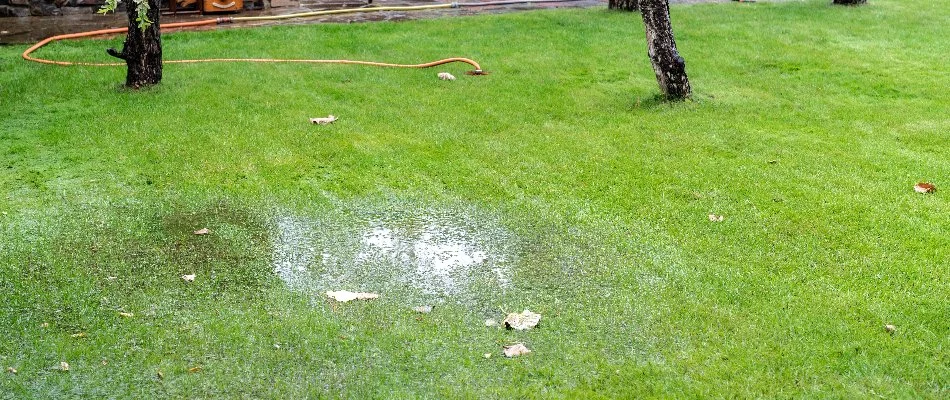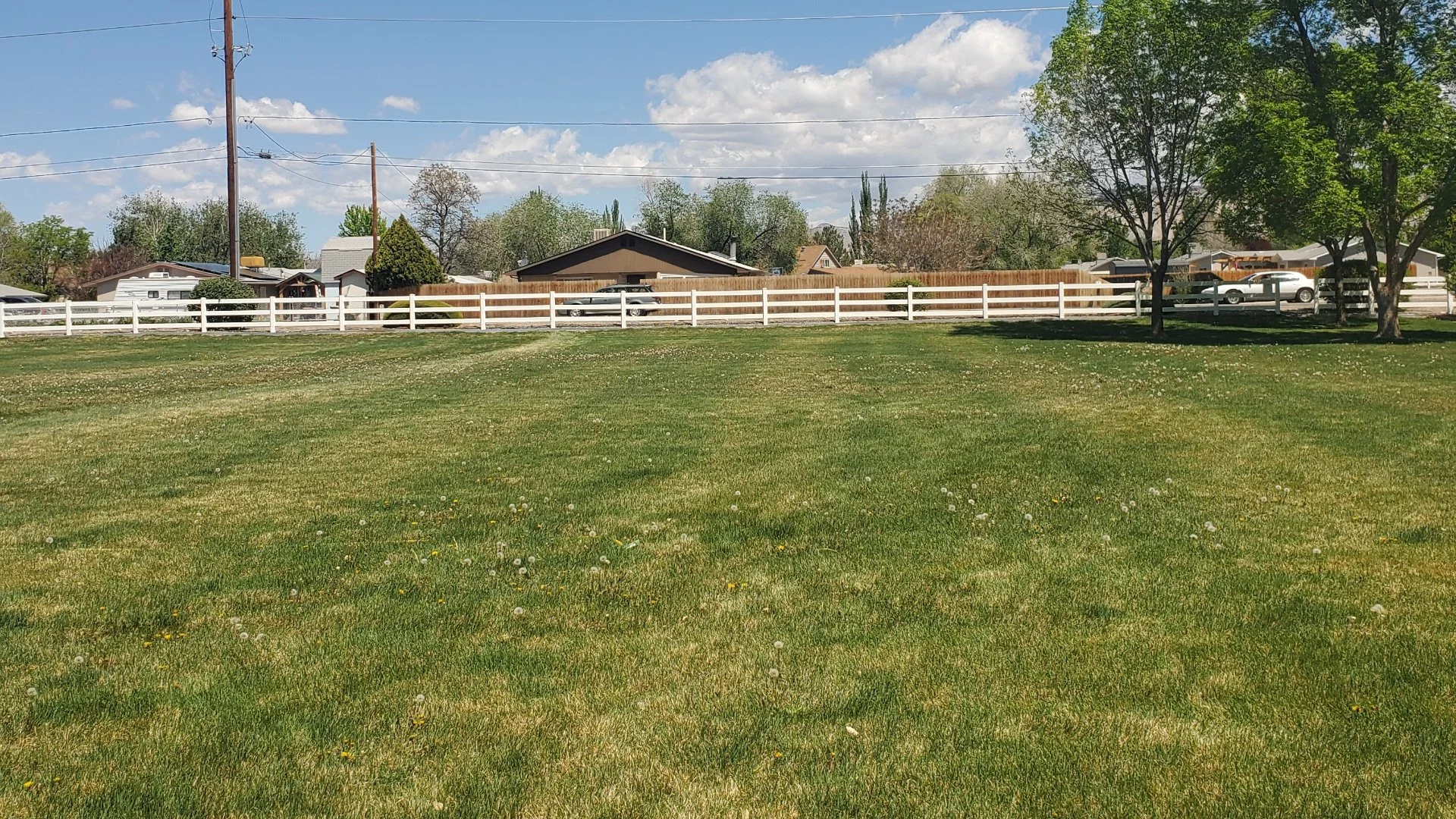Soil compaction is a common issue that can significantly impact the health and appearance of your lawn in Colorado. When the soil becomes compacted, it makes it difficult for essential nutrients, water, and air to reach the roots of your grass. This can lead to a weak and unhealthy lawn. There are ways to determine if your lawn's soil is compacted, like if your lawn is struggling to stay green even with regular fertilizer treatments. Water pooling on your lawn can also point to compacted soil that cannot absorb water. Additionally, thinning or patchy areas can also be a sign of compacted soil. This happens because the roots are struggling to grow and absorb essential nutrients.
Your soil might be compacted if your lawn is struggling to stay green.
If you notice that your lawn is struggling to stay green despite regular fertilization, it may be a sign of soil compaction. Compacted soil restricts the movement of nutrients, water, and air to the roots of your grass. As a result, your lawn may not be able to absorb the necessary nutrients and water it needs to thrive. This can lead to a lack of color and vitality in your grass.
If you are regularly applying fertilizer but still see a decline in your lawn's health, it may be time to address soil compaction and ensure your grass can absorb the treatments. The way to address this is through aeration. This will loosen up tightly packed soil and create channels for fertilizer treatments and other essential resources to reach the roots of your grass!
Water Pooling on Your Lawn is a Sign of Compacted Soil

Poor drainage is another indicator of soil compaction. When the soil is compacted, it becomes difficult for water to penetrate and drain properly. This leads to water sitting on the surface of your lawn instead of soaking in. Compacted soil does this because the soil particles are tightly packed together and there is no space for water to penetrate.
Standing water on your lawn is most noticeable after a rainstorm or irrigation. If you're seeing this sign on your lawn, address it promptly by aerating the soil. Proper drainage is essential for the health of your lawn, as it allows for adequate water absorption and prevents root rot.
Thinning & Patchy Areas on Your Lawn Indicate Soil Compaction
Soil compaction can also result in thinning or patchy areas on your lawn. When the soil is compacted, the roots of your grass will have trouble getting access to the nutrients, water, sunlight, and air they need to grow and thrive. Without these vital resources, your lawn will develop weak and thin patches, as well as bare spots where the grass has died off completely. If you notice thinning or patchy areas on your lawn, it may be a sign that your soil is compacted and needs to be addressed.
Call our team to sign up for our lawn aeration service!
Soil compaction can have a significant impact on the health and appearance of your lawn. By understanding the signs of soil compaction, you can take the steps to address the issue. Fortunately, you don't have to fix the issue yourself. Here at Mesa Turf Masters, a lawn aeration service is offered to alleviate soil compaction and restore your lawn's health and vitality.
This service involves removing cores of soil from your turf to loosen up compacted soil and create channels where nutrients and other vital resources can pass through to reach the roots. You can schedule this service in the spring or fall to ensure your grass is strong enough to handle and bounce back from the process. This service is offered to property owners in Grand Junction, CO, and neighboring communities, like Fruita and Palisade. Call us today at (970) 434-5440 to sign up!



Comments (0)
Thanks for your comment!
Thanks for your feedback! Your comments have been successfully submitted! Please note, all comments require admin approval prior to display.
Error submitting comment!
There is a problem with your comment, please see below and try again.